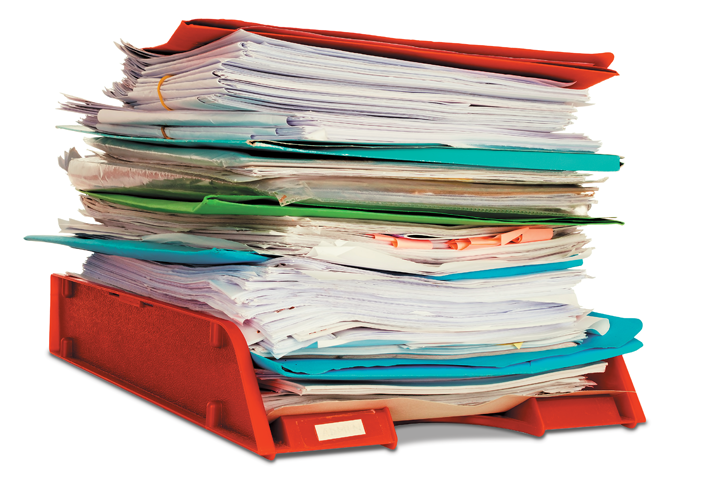The show is over. Now what? It's time to review your program's effectiveness. Follow this outline to compile a comprehensive post-show report. By Candy Adams

riting a post-show report is an exacting, time-consuming, and sometimes annoying task. The post-show report is also one of the most important components of your exhibit program. First, the data presented demonstrates to management that your program is based on strategy, measurable objectives, and enhancing the company's bottom line. Second, effective reporting can help shield your exhibit program from any impending budget cuts since you're ideally proving that exhibiting is not just a marketing expense, but an investment that's paying dividends. Third, it gives you positive visibility to "toot your own horn" and elevate your position from logistic paper-pusher to strategic marketer. Plus, it's gratifying in the long run, since it truly closes the loop on a project.
If you're thinking, "I have never written a post-show report before, and I don't even know where to start," don't worry. It's not as hard as you might think. And while there's no one-size-fits-all template, there are some basics that should be covered such as strategic goals and objectives for the show, measurable results, overall budget, and plans for program improvement. Here, then, are the 10 main sections that should be included in a post-show report.
 Executive Summary
Executive Summary
The first section of your post-show report should be able to stand alone as a summary of the whole show. It's important to remember that this one-page brief may be the only part of the report some of your executives will read. Therefore, it should include succinct summaries of pre-show goals and objectives, post-show results, lead counts, press and analyst interviews, impressions, educational contacts, and costs. Also include recommendations for future improvements. Since executives are particularly prone to "time poverty," brevity is best.
 Strategic Goals and Objectives
Strategic Goals and Objectives
If you've written measurable, quantitative, and qualitative pre-show goals and objectives that have been approved by upper management, this section of the post-show report will be relatively easy. Examples of show-related goals include collect qualified leads, increase brand awareness, generate media coverage, and build relationships with current clients and prospects. If metrics prove that you achieved your goals and objectives, give credit where it's due and toot your team's horn. If there are goals that weren't met, explain the results along with recommendations on how you plan to revise tactics for future shows.
 Sales-Lead Report
Sales-Lead Report
Report the various types of leads collected at the show, contact information for future sales, and general feedback from your exhibit staff. Depending on how soon the post-show report is presented, accurate numbers may not be available, but estimates can be used.
First, identify the total number of leads. Then, break that down into a qualitative assessment by categorizing the leads as A, B, or C, based on the type of prospect (individual buyer, dealer or distributor, or past customer), decision-making power, need for and interest in your product, time frame to buy, budget, and desire for post-show follow-up. All of these criteria contribute to your company's ability to turn a lead into a sale. Clearly define your criteria for each lead category and list the number of leads gathered in each one.
Next, explain your lead follow-up process for each lead category. What future follow-up is planned? How will you calculate and attribute sales to your participation at the trade show?
Finally, include hard numbers related to the bottom line. Calculate the cost per lead by dividing the direct costs of your trade show participation by the number of qualified leads collected. Talk with sales management to determine an estimated closing ratio of the leads, the potential average value of each sale, and a projected time period to close it. Then include that information in your show report to provide a more global view of the value of those qualified leads.
 Press/Media Results
Press/Media Results
Identify the number of press, media, and financial or industry analysts that visited the booth, attended your event, and/or met with your press liaison or executive management. Count the number of interactions that resulted in favorable press mentions within a specific time period. If available, include positive excerpts from the coverage.
Calculate the cost of equivalent advertising to reach a similarly sized audience. If you don't have an established method for quantifying the value of press mentions, contact each publication to determine the cost of an ad of comparable size.
 Exhibit Effectiveness
Exhibit Effectiveness
Write a brief description and evaluation of your exhibit, including a photo or rendering and a statement on each of the following four components:
 Exhibit properties.
Exhibit properties. Evaluate whether your exhibit was functional and helped you reach your goals and objectives. Was the condition of your exhibit properties consistent with the image your company wants to convey? Note necessary repairs. Also report any security issues, such as corporate espionage, competitive reconnaissance, or theft that may have happened during the show. What can be done at future shows to avoid these problems?
 Product displays.
Product displays. Describe how attendees interacted with the products. Were products displayed in an inviting and uncluttered fashion? Could visitors identify separate products and/or product lines from a distance? Was signage with detailed information, such as pricing or specifications, in proper proximity to the products? Include any problems or product failures that occurred during demos, along with recommendations for replacements or repairs.
 Floor location, booth layout, and traffic flow.
Floor location, booth layout, and traffic flow. How did your exhibit's location on the show floor affect foot traffic? Was the size of your exhibit sufficient to allow visitors to enter and remain in it long enough to talk with staffers and/or participate in demonstrations? Report whether the booth layout was conducive to traffic flow through your exhibit, leading visitors where you wanted them to go, or if it blocked people from entering.
 Graphics.
Graphics. Did your graphics draw attendees into your booth from 50 feet away, and from the aisle directly in front of your exhibit? Did your message clearly convey your company's unique selling proposition? Also include any frequently asked questions that should be incorporated into future booth graphics.
 Promos and Exhibit Activities
Promos and Exhibit Activities
Review the effectiveness of each of your pre-, at-, and post-show promotional programs and sponsorships. This analysis can be both objective, such as measuring the number of attendees who returned a pre-show mailer to your exhibit in exchange for a gift, and subjective, such as guest feedback from an invite-only press event.
Provide a brief synopsis of the type, length, and number of in-booth demonstrations and/or presentations, including the total number of participating attendees. And report on any ancillary events, such as hospitality suites, customer-appreciation dinners, networking events, entertainment, co-sponsored events, customer or dealer/distributor training, sponsored conference sessions, or participation by company employees or key clients in conference seminars.
 Booth Staff
Booth Staff
Evaluate the effectiveness of your booth staff, so you can make improvements for the next show. Analyze the following details:
 Number of staff members.
Number of staff members. Did you have enough (or too many) staff members working during setup, teardown, and show hours? Make staffing recommendations for future shows.
 Pre-show training.
Pre-show training. Review your booth staff's pre-show training in the following areas: strategy, product knowledge, boothmanship, and logistics. Was the training effective in enhancing your staff's understanding of show goals and in-booth behavior? If not, what changes need to be made before the next show?
 Staff performance.
Staff performance. Determine the productivity and effectiveness of your staff, mentioning your most effective members by name. Record any problems with your staff, such as low productivity, tardiness or absences, morale issues, etc.
 Competitive Analysis
Competitive Analysis
Include a brief summary about how your company stacked up against the competition on the show floor. If you assigned exhibit staff to report on competitors' show activities, develop a comprehensive competitive analysis of your competitors' products, exhibits, press kits, and events at the show based on your booth staffers' feedback, and attach a copy to your post-show report.
 Budget
Budget
Provide a comparison of your estimated budget to your final investment in the trade show. Point out everything you did to cut costs along the way. If you went over budget, explain the charges and what caused them to come in higher than initially projected, along with suggestions on how to prevent such budget overruns in the future.
 Conclusion
Conclusion
This section should put the show into context within your overall trade show program, considering both the past and the future. If applicable, provide a year-over-year comparison of results from last year's show. Indicate how this year's show was stronger or weaker, and why. Rank the show among the other shows at which you exhibit based on ROI and overall impact to your corporate goals and objectives.
Discuss what you want to continue doing and what you want to improve for future trade shows in order to advance the exhibit program. And even though it's much easier to highlight your successes at a show, don't be afraid to point out the program's shortfalls as well. It all goes back to that old adage that if you don't learn something from the past, you're doomed to repeat it.





 riting a post-show report is an exacting, time-consuming, and sometimes annoying task. The post-show report is also one of the most important components of your exhibit program. First, the data presented demonstrates to management that your program is based on strategy, measurable objectives, and enhancing the company's bottom line. Second, effective reporting can help shield your exhibit program from any impending budget cuts since you're ideally proving that exhibiting is not just a marketing expense, but an investment that's paying dividends. Third, it gives you positive visibility to "toot your own horn" and elevate your position from logistic paper-pusher to strategic marketer. Plus, it's gratifying in the long run, since it truly closes the loop on a project.
riting a post-show report is an exacting, time-consuming, and sometimes annoying task. The post-show report is also one of the most important components of your exhibit program. First, the data presented demonstrates to management that your program is based on strategy, measurable objectives, and enhancing the company's bottom line. Second, effective reporting can help shield your exhibit program from any impending budget cuts since you're ideally proving that exhibiting is not just a marketing expense, but an investment that's paying dividends. Third, it gives you positive visibility to "toot your own horn" and elevate your position from logistic paper-pusher to strategic marketer. Plus, it's gratifying in the long run, since it truly closes the loop on a project. 













